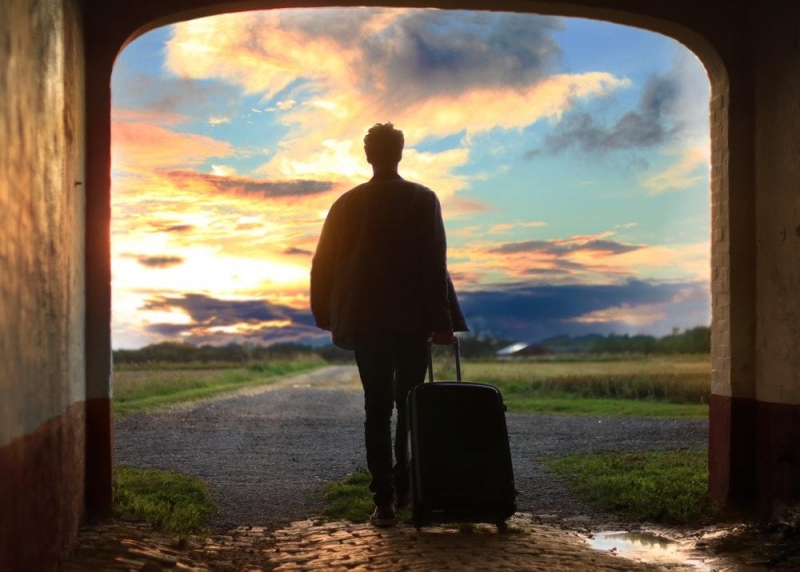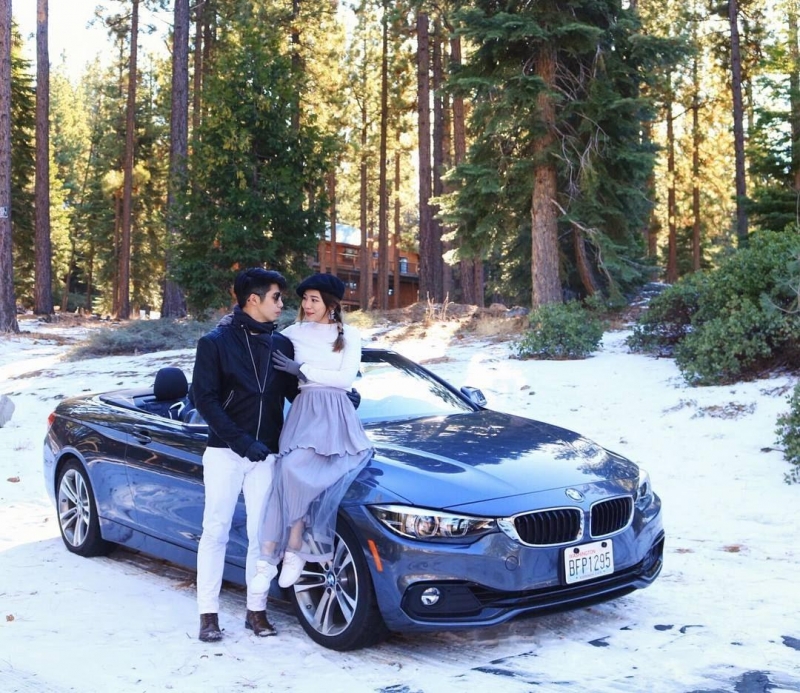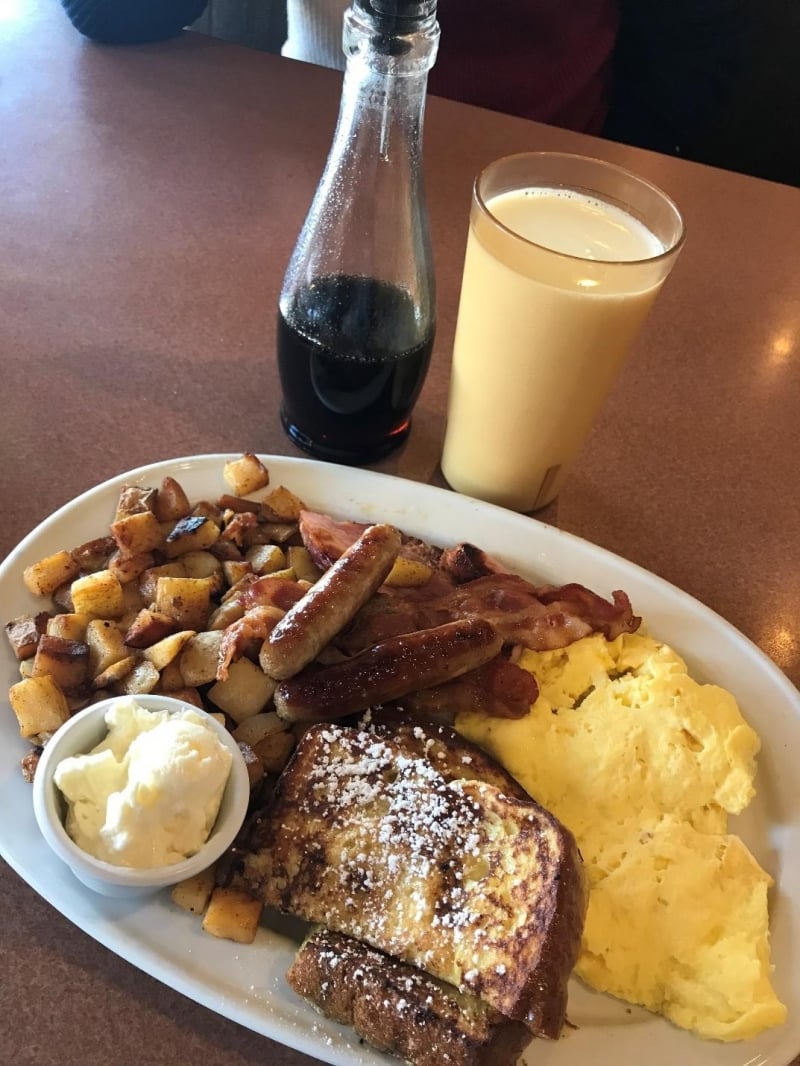The US is an amazing country to visit because it is simply a Land of Everything: sprawling cities, scenic outdoors, legendary shopping, all kinds of cuisine, and attractions of every sort. However, it’s also the birthplace of capitalism – which means that almost everything is profit-driven, so expect business to flick out every trick in the book to make you spend as much as possible. Before you head there, arm yourself with these five sets of practical Do’s and Don’ts to make every single cent count whilst enjoying the best that the US has to offer.
DO… Strategize your accommodation very carefully, because it’s probably going to be your one biggest expense tab in the US.
The US is generally affordable for almost everything, with one notable exception being accommodation, especially in major cities during festive seasons. A modest boutique hotel in downtown Manhattan near the festive season would probably cost upwards of US$300 a night, whereas a non-festive night at same hotel could cost under a third of that price. Head over to a hotel comparison site and search for any central hotel during estimated peak and off-peak seasons; the difference in prices could be staggering and way more than you’d expect. Having said that, such price fluctuations are much less pronounced for hotels slightly further out of the city centre, and even less so for Airbnb options where landlords typically don’t adjust prices electronically. Moreover, many American Airbnb owners are often very accommodating and friendly, so expect to get little “freebies” e.g. late checkouts, complimentary breakfast and access to anything in the refrigerator, booze and snacks, maybe even playtime with the house pets. Finally, American homes for short lease tend to be very neat and beautifully renovated, which often outshines the same-old hotel layout everywhere.

They totally want all your money | Image credit: Hospitality Study
Oh, and an added mention is that most American hotels have a “residential fee” or equivalent, which is paid during check-in on top of what you’ve already paid for on the booking platform (which often indicates it only in very fine print). I personally feel it’s a bit senseless, but that’s the business model. And these fees can be HEFTY – once, an NYC hotel we stayed in for a night during peak season slapped on a US$100 resort fee on top of a US$250 primary charge. So be very careful.
DON’T… Always rush to book accommodation way ahead.
In certain cities (especially Las Vegas), it is often advantageous to book your hotels online last-minute. You can do this via any major hotel booking website, ideally on the day itself after check-in time when hoteliers slash prices to fill empty rooms. Typically, this strategy can be adopted to great effect in hotel-dense cities, especially during off-peak seasons – a place costing US$100 for an advance booking could be slashed to US$20 by mid-afternoon of the check-in day. Note that this tends to work only on hotels; Airbnb options aren’t so demand-sensitive. And if you should ever find yourself out of luck when trying this, drive around the area and look for a motel/inn for stakeout for the night.
DO… Settle your travel essentials in advance.
There are travel essentials… and then there are travel “essentials”. To a seasoned traveller, only two things are an absolute must: 1) the plane ticket to get to your destination on your planned date, and 2) your travel visa or equivalent.
For the plane ticket, use any airline fare aggregator such as Skyscanner to find the lowest fare. Research has pegged the average lowest price point to be 1.5 to 2 months before takeoff, especially for flights on Tuesdays or Wednesdays (midweek departure doesn’t matter much for a typical trip to the US that lasts over 2 weeks). I don’t recommend trying the last-minute hotel stunt at all with your plane ticket because fares tend to fluctuate much more gradually, so it defeats the purpose and it’s simply not worth the risk of being grounded on home soil.
For your travel visa (Singaporeans travelling to the US need only to get an ESTA, or visa-waiver), there’s absolutely no harm in getting that out of the way early as it may take a working day or two for approval. Make sure to get your ESTA from the official government website, as there are many opportunistic sites masquerading as the official ESTA platform; these will only facilitate your application with a super hefty “admin” fee. Very important!
DON’T… Prepare for the things that may be better settled in the Land of Everything.
Winter clothes, snacks, toiletries, even sleeping bags for a campout… the US has them all, just about everywhere, cheap. Just one trip to Target/Walmart (there are like literally 5,000 of them across the country) and you’re all set. Supermarkets in the US are really really huge and you’ll be amazed by the amount of stuff (including in-trend clothes) that they stock up.
There’s absolutely no point in buying all your winter gear and clothes at high prices in Asia, lugging them across the globe, and realizing that there’s so much in the US you wished you could buy but can’t due to luggage space and duplication. So rule of a thumb: fly there empty, come back full.

How your back view should look when leaving for the US
DO… Rent that dream vehicle, and pump gas at the right places.
Like most other large countries, reliable public transport coverage in the US is mostly limited to central metropolitan areas. Especially if you’re going cross-country sightseeing, getting a car is definitely the (and often only) way to go, allowing you to enjoy one of the best experiences the US has to offer – a road trip. Landscapes across many interstate highways are absolutely beautiful, and long drives allow you to see the sun’s journey from dawn to dusk across the beautiful American sky. Watch out for cotton-candy sunsets!
Due to intense competition among major rental companies, vehicle rental in the US is likely the most affordable of any developed country. So take this chance to drive the dream car that you always wanted at reasonable prices. Use a car rental aggregator such as Travelocity, and don’t limit yourself to that 10-year Toyota Corolla. Style it out across the 101 with a convertible, or make your vehicle your hotel too with an RV or large van (the Dodge Grand Caravan is an excellent choice, with fully collapsible seats). Here’s us with our dream 2017 BMW 430i Convertible at under US$70 a day:

“Damn those rich Asian kids”, or so they thought
Gas is cheapest in suburban gas stations, followed by cities, and lastly those “middle of nowhere” gas stations along interstate highways. The price difference could go up to 30%, so make sure to pump up in suburbia before heading out to the highways.
DON’T… Be too quickly bought in on all those insurance add-ons.
Upon collecting the keys to your rented car, you’ll invariably be presented with an insurance menu consisting minimally of Collision Damage Waiver (CDW), Supplementary Liability Protection (SLP), and Personal Accident Insurance (PAI). These insurance purchases can easily double your per-day rental cost; they are a big source of the rental companies’ income, which hints to you that in the grand scheme of things they aren’t cost effective to the customer.
Most credit cards would have provided some sort of CDW if the card is used to pay for the rental – do a check on the card you’re using. PAI is often duplicated against other insurances already owned by the renter such as travel insurance, company-paid insurance, or other general personal accident plans. Of these, SLP is probably the one seriously worth considering because it is unlikely to be duplicated and Americans generally won’t hesitate to sue your pants off in the event of any mishap. In addition to these three common products, there may be others on the catalogue that are also unlikely to be value-added to you, the discerning cost-conscious customer. So be tight with your bucks at the rental counter.
DO… Shop with the “3-questions” rule.
Before you left home on your grand US adventure, yo Momma probably said something at the doorstep along the lines of “be safe and don’t buy too much stuff” (unless you brought her along). Easier said than done, I assure you, especially the shopping. When you hit the treacherous malls at the Land of Everything, I would recommend asking yourself three simple questions for each item:
Q1: “Would I almost certainly have bought this item in my home country and at a higher price?”
Q2: “Do I like this item at least 90%?”
Q3: “Could I get this cheaper somewhere else along the journey?”
None of these questions have an absolute answer, but when addressed in tandem they should help make your shopping decisions much easier. Of these, Q2 is probably the most important; “90%” is up to you to define but it certainly helps you avoid situations where you buy something you’re half-hearted about and regret down the line or later in the trip, so keep a high standard. The US has so much stuff that you should only commit to the best of the best purchases.

You probably did it wrong if you didn’t come out looking like this
DON’T… Just limit yourself to the overhyped outlet malls.
When people think of US shopping, they always think outlet malls carry the best deals. This could have been true 5-6 years ago when the outlet concept was fresher, but this may not be so true nowadays. The fact that many of these malls are swarming with East Asian tourists holding fat wallets should indicate that shops there aren’t going to be too penny-pincher friendly. While outlet mall prices for major brands are typically 30-50% off retail prices, the availability of these discounts is so widespread that I would consider this the “normal” price of things in the US. People hardly buy stuff at nett boutique prices nowadays, unless you’re a connoisseur who’s willing to shell out the bucks for the latest season. Just to prove a point, if you’re Singaporean – did you know that IMM is actually an outlet mall? Do people flock there in throngs to buy branded stuff?
Now, to get the REALLY cheap deals, as they say, you have to go where the locals go. Locals generally go to the big supermarkets such as Target, Kohls, and TJ Maxx to meet all their needs – the biggest and best ones are found in suburban estates a bit further out from main cities. While not organized by brand like the outlet malls, these mega-supermarkets often carry branded goods on their discount racks at seriously insane discounts, and we’re talking like 70-80% off retail prices. For example, we got a huge classic 77cm Delsey luggage at US$79 at TJ Maxx, when comparable Delseys were going at US$300-400 at the Outlet Malls. In general, I would say that Target is best for really quality “house brand” products and TJ Maxx for crazy discounts off established brands from two or more seasons back.
DO… Enjoy lots of good, affordable meals in the US.
Americans who cook for a living are by and large a bunch of people who really take pride in their product, in terms of taste, aesthetics, and quantity. Also, most popular cities in the US are getting more and more multiracial (with certain regions even being minority-dominant), which results in a good spread of cuisine everywhere you go. My personal favourite dish is the classic American breakfast in all shapes in forms and boy… they do it well.

More addictive than drugs
Unless you’re heading to a fancy restaurant, table-service servings are usually about US$9-12, fast food is US$5-8, and “instant food” like hot dogs and tacos from gas station marts can be yummy and filling for way less than you’d expect. While restaurant or fast-food prices may not seem too low at first glance, you’d be happy to know that American servings tend to be HUGE (see picture above) by Asian standards, which leads to our final point:
DON’T… Over-order.
One of the greatest sins on earth is to “waste” money and calories at the same time by ordering more food than you need or can enjoy. With the typical serving size, this sin can be so easily committed by Asians in the US. Unless you’re a big eater, a half-serving or two third serving at most should fill you up pretty nicely. Which means that you can get by most meals by simply sharing one main course! This effectively cuts food cost by half throughout the whole trip, lets you savour every single bite of food, and allows you to boast the biggest achievement of all: returning home from the US still in shape.

Was just a few push-ups away from returning home through my front door looking like this






